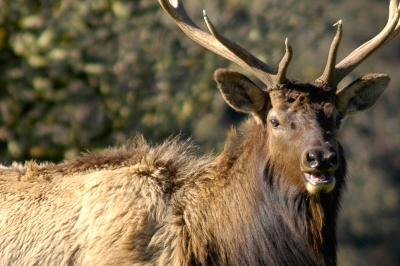

Their unwelcome presence can destroy ecosystems and cost millions of dollars. It drives everything we do from the purpose a refuge is established, to the recreational activities offered there, to the resource management tools we use. Selecting the right tools helps us ensure the survival of local plants and animals and helps fulfill the purpose of the refuge. The wildlife and habitats of the Wichita Mountains Wildlife Refuge are managed using prescribed fire, grazing management, invasive species invasive speciesĪn invasive species is any plant or animal that has spread or been introduced into a new area where they are, or could, cause harm to the environment, economy, or human, animal, or plant health. Fish and Wildlife Service. Wildlife conservation is at the heart of the refuge system. Class: Mammalia Order: Artiodactyla Family: Cervidae Scientific name: Cervus canadensis nannodes Common name: Tule elk Description and Identification Aides There are three species of elk that exist in California Roosevelt ( Cervus canadensis roosevelti ), Rocky Mountain ( Cervus canadensis nelsoni ), and Tule ( Cervus canadensis nannodes) elk.
#Roosevelt elk range series
Book now and enjoy pleasant and comfortable accommodations alongside wildlife tours and Kodiak fishing trips.The National Wildlife Refuge System is a series of lands and waters owned and managed by the U.S. Herd numbers range from 40 to 100 animals, providing a majestic spectacle!Įxperience the Roosevelt Elk and more Alaskan land & marine wildlife splendor with a trip to Afognak Island, the 2 nd largest of the Kodiak Islands, and a stay at our Afognak Wilderness Lodge. The Roosevelt elk ( Cervus canadensis roosevelti), also known commonly as the Olympic elk and Roosevelt's wapiti, is the largest of the four surviving subspecies of elk ( Cervus canadensis ) in North America by body mass (although by antler size, both the Boone and Crockett (rifle) and Pope and Young (bow) records have Rocky Mountain elk being l. As summer progresses, you’ll have to do some hiking, as the elk move to higher ground during this season. If you’re staying at the Afognak Wilderness Lodge, you’ll have a good chance of spotting some Roosevelt Elk. Until early June, the elk are down at lower elevations. Steep and brushy is the typical for Roosevelt elk hunting and shot opportunities are most often 75 yards and less with a rifle. They were introduced to this area in 1928. These elk have one of their two Alaskan homes here on our Afognak Island. They will adapt their plant-based diets depending on what’s available during the season. Roosevelt Elk live off a diet of plants like shrubs, grasses and berries. Adult female Roosevelt Elk (cows) average 700 pounds. Their antlers can average 4 feet in length. Rocky Mountain elk are found in eastern Oregon and Roosevelt elk are found in western Oregon, with most concentrated in the Coast, Cascade and Blue Mountain ranges. Roosevelt elk occupy a limited range in northwestern California with temperate. Bulls also have antlers that are thick with vertical points and a three-point tip. WebRoosevelt elk are the third largest land mammal in North America. This makes them greatly adapted to the Afognak Island winter habitat.Īdult Roosevelt Elk (bulls) mature to be 875 pounds, 5 feet tall at the shoulder, and 8 to 9 feet in length, on average. Roosevelt Elk have a larger, stronger body than Rocky Mountain Elk which allows them to swim, break through deep snow and climb to high elevations. In the spring, they will have a lighter, reddish summer coat and in the fall, they will produce a coat that is darker and denser for winter. Habitat: Roosevelt elk occupy most of western Oregon, with concentrations. Rosies are darker in color than other elk subspecies and the largest in terms of body size, with bulls generally weighing 700-1,100 pounds. Roosevelt Elk have a dark brown neck, a tan body, and a white rump patch. Features: Roosevelt elk are one of two subspecies of elk found in Oregon, with an estimated population of 59,000 in the state. The Roosevelt Elk has a unique coloration different than that of other elk. One of the amazing creatures you can see while lodging on Afognak Island is the magnificent Roosevelt Elk, the largest kind of elk in North America. On Afognak Island, we are lucky to share the land with some awe-inspiring Alaskan wildlife.


 0 kommentar(er)
0 kommentar(er)
